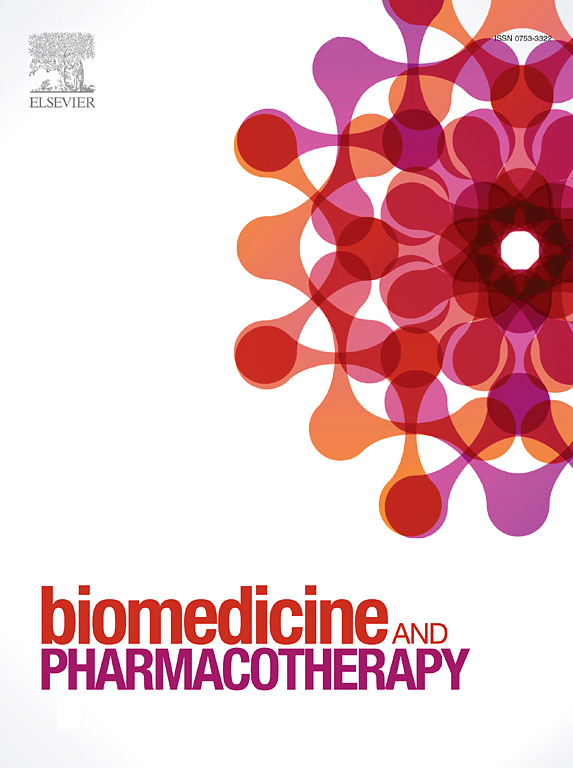Cellucalst enzyme-assisted extraction of Sargassum horneri enhances the immunomodulation by regulating TLR4/MyD88/NF-kB pathway in murine splenocytes with or without Concanavalin A
IF 7.5
2区 医学
Q1 MEDICINE, RESEARCH & EXPERIMENTAL
引用次数: 0
Abstract
Sargassum horneri (S. horneri) is an edible species of large brown algae inhabiting along the coasts of northeastern Asia. The study focuses on the impact of celluclast enzyme extract of S. hoeneri (SHC) on various immune cell populations in splenocytes including granulocytes, macrophages, dendritic cells, and T lymphocytes. SHC alone increased the population of granulocytes and macrophages and the secretion of M1 macrophage-derived cytokines (TNF-α, IL-22), and M2 macrophage-derived cytokines (IL-4, IL-10). Interestingly, however, SHC suppressed the concanavalin A (Con A)-expanded populations of macrophages, dendritic cells, granulocytes, T and B cells, and Con A-promoted secretion of M1-macrophage derived cytokines (IFN-γ, IL-1β, TNF-α, IL-17, IL-22) and M2-macrophage derived cytokines (IL-4, IL-10, IL-13, TGF-β). SHC further restrained the Th1, Th2, and Th17 cell responses through attenuating the expression of respective transcription factors T-bet, Gata3, and Rorγt. The anti-inflammatory property of SHC is highlighted through its influence on cytokine production, particularly in the NF-κB pathway, and the attenuation of Toll-like receptor (TLR) signaling. The results reveal that SHC acts as both an immunostimulator and an inhibitor of hyperimmune reactions, showcasing its potential therapeutic applications in conditions involving dysregulated immune responses such as autoimmune diseases and inflammatory disorders. This positions SHC as a promising candidate for the development of functional ingredients with diverse applications encompassing the realms of food, pharmaceuticals, and cosmetics.
Cellucalst 酶解辅助提取马尾藻角茴香可通过调节小鼠脾细胞中的 TLR4/MyD88/NF-kB 通路增强免疫调节作用,无论是否使用 Concanavalin A。
马尾藻(Sargassum horneri,S. horneri)是一种可食用的大型褐藻,栖息于亚洲东北部沿海地区。本研究的重点是马尾藻细胞核酶提取物(SHC)对脾细胞中各种免疫细胞群(包括粒细胞、巨噬细胞、树突状细胞和 T 淋巴细胞)的影响。单用 SHC 可增加粒细胞和巨噬细胞的数量,增加 M1 巨噬细胞衍生细胞因子(TNF-α、IL-22)和 M2 巨噬细胞衍生细胞因子(IL-4、IL-10)的分泌。但有趣的是,SHC 可抑制巨噬细胞、树突状细胞、粒细胞、T 细胞和 B 细胞的共振素 A(Con A)扩增,以及 Con A 促进的 M1-巨噬细胞衍生细胞因子(IFN-γ、IL-1β、TNF-α、IL-17、IL-22)和 M2-巨噬细胞衍生细胞因子(IL-4、IL-10、IL-13、TGF-β)的分泌。SHC 通过抑制转录因子 T-bet、Gata3 和 Rorγt 的表达,进一步抑制 Th1、Th2 和 Th17 细胞的反应。SHC 对细胞因子(尤其是 NF-κB 通路中的细胞因子)产生的影响以及对 Toll 样受体(TLR)信号转导的抑制作用凸显了 SHC 的抗炎特性。研究结果表明,SHC 既是一种免疫刺激剂,也是一种高免疫反应抑制剂,显示了它在自身免疫性疾病和炎症性疾病等免疫反应失调情况下的潜在治疗用途。这使得 SHC 成为开发功能性成分的理想候选物质,其应用领域涵盖食品、药品和化妆品等多个领域。
本文章由计算机程序翻译,如有差异,请以英文原文为准。
求助全文
约1分钟内获得全文
求助全文
来源期刊
CiteScore
11.90
自引率
2.70%
发文量
1621
审稿时长
48 days
期刊介绍:
Biomedicine & Pharmacotherapy stands as a multidisciplinary journal, presenting a spectrum of original research reports, reviews, and communications in the realms of clinical and basic medicine, as well as pharmacology. The journal spans various fields, including Cancer, Nutriceutics, Neurodegenerative, Cardiac, and Infectious Diseases.

 求助内容:
求助内容: 应助结果提醒方式:
应助结果提醒方式:


